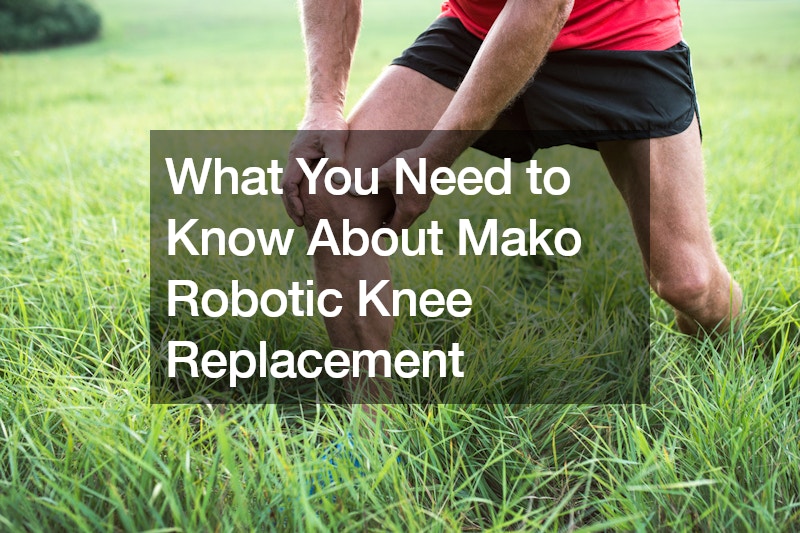
Disclaimer: This website provides health information for educational purposes only and is not a substitute for professional medical advice, diagnosis, or treatment. Always seek the guidance of a qualified healthcare provider with any questions you may have.
When it comes to knee replacement surgery, advancements in technology have revolutionized the way procedures are performed, leading to better outcomes and quicker recoveries. One such innovation is the MAKO robotic knee replacement system. This cutting-edge technology offers precise planning and execution, providing patients with personalized treatment tailored to their unique anatomy. Let’s delve deeper into what MAKO robotic knee replacement entails and why it’s gaining popularity in the world of orthopedic surgery.
Understanding MAKO Robotic Knee Replacement
MAKO robotic knee replacement is a state-of-the-art surgical system designed to assist orthopedic surgeons in performing total knee replacement procedures with unparalleled accuracy. Unlike traditional knee replacement surgery, which relies heavily on manual techniques, Mako utilizes advanced robotics and 3D imaging to create a personalized surgical plan for each patient.
How Does It Work?
The process begins with a CT scan of the patient’s knee joint, which generates a 3D model of the anatomy. This virtual representation allows the surgeon to assess the joint’s condition, identify any abnormalities, and plan the optimal implant placement with remarkable precision.
Once the surgical plan is established, the Mako system guides the surgeon throughout the procedure, providing real-time feedback and ensuring that each cut and placement is executed according to the pre-determined plan. This level of accuracy enhances the alignment and positioning of the implant, leading to better functionality and longevity of the artificial knee joint.
Benefits of MAKO Robotic Knee Replacement
- Enhanced Precision: By utilizing robotic technology and 3D imaging, Mako allows for more accurate implant placement, resulting in better alignment and stability of the knee joint. This precision helps minimize complications and improves overall outcomes for patients.
- Customized Treatment: Every patient’s anatomy is unique, and MAKO robotic knee replacement recognizes that. By creating a personalized surgical plan based on individual anatomy, patients receive tailored treatment that addresses their specific needs, leading to improved functionality and comfort post-surgery.
- Faster Recovery: The precise nature of MAKO robotic knee replacement often translates to a quicker recovery time compared to traditional knee replacement surgery. With less trauma to surrounding tissues and more accurate implant positioning, patients may experience reduced pain and swelling, allowing them to return to their daily activities sooner.
- Long-Term Success: Proper alignment and positioning of the knee implant are crucial factors in determining the longevity of the artificial joint. By optimizing these aspects through robotic assistance, MAKO robotic knee replacement may contribute to a more durable and successful outcome, potentially reducing the need for revision surgeries in the future.
Who Is a Candidate for Mako Robotic Knee Replacement?
MAKO robotic knee replacement is suitable for individuals suffering from advanced osteoarthritis or other degenerative conditions of the knee joint that have not responded to conservative treatments such as medication or physical therapy. Candidates should be in overall good health and have realistic expectations regarding the outcome of the procedure.
It’s essential to consult with an orthopedic surgeon experienced in robotic-assisted knee replacement to determine if Mako is the right option for you. Your surgeon will evaluate your condition, medical history, and individual needs to help you make an informed decision about your treatment plan.

What to Expect During Recovery
Recovery following MAKO robotic knee replacement varies from person to person but typically involves a combination of pain management, physical therapy, and a gradual return to activity. Most patients can expect to be up and walking with assistance shortly after surgery and gradually progress to more demanding activities over the following weeks and months.
Physical therapy plays a crucial role in restoring strength, flexibility, and range of motion to the knee joint. Your healthcare team will provide you with a customized rehabilitation plan tailored to your specific needs, guiding you through each stage of recovery.
While recovery from knee replacement surgery can be challenging at times, the benefits of improved mobility and reduced pain make it a worthwhile endeavor for many patients. With dedication to rehabilitation and follow-up care, most individuals can expect to enjoy a significant improvement in their quality of life following MAKO robotic knee replacement.
MAKO robotic knee replacement represents a significant advancement in the field of orthopedic surgery, offering patients a more precise and personalized approach to total knee replacement. By combining robotic technology with advanced imaging techniques, surgeons can achieve optimal outcomes with enhanced alignment, stability, and functionality of the artificial joint.
If you’re considering knee replacement surgery, it’s essential to explore all available options and discuss them with your healthcare provider. While MAKO robotic knee replacement may not be suitable for everyone, for many patients, it offers the promise of improved outcomes and a faster return to the activities they love.